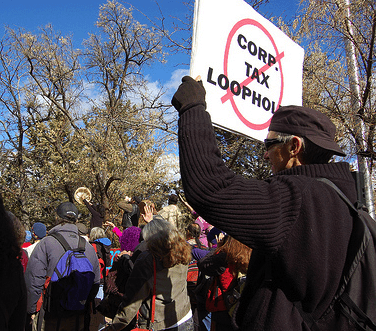When I wrote two weeks ago that Master Limited Partnerships are a Lousy Policy for Solar, Wind, and Taxpayers, I was aware that it wasn’t a widely held view. The piece has done more than provide another viewpoint on the complicated corporate structure, it has ignited a significant debate across the renewable energy community about the concept:
-
At Renew Wisconsin: Master Limited Partnerships for Renewable Energy: A Point/Counterpoint
- On ThinkProgress: Master Limited Partnerships (MLPs) Will Bring More Investment To Clean Energy
- At Midwest Energy News: Commentary: MLPs a powerful tool to boost renewables
- At GreenTechMedia: MLPs: A Bargain for Renewable Energy or a Devil’s Bargain?
The counterpoints are from some very smart people in the renewable energy wonkosphere, and it’s worth a quick review of their points:
- We can’t get to the level of investment we need without the big investors, and they like MLPs (and also, companies aren’t waiting for MLPs to invest in renewable energy)
- Renewables can’t get access to low cost capital without MLPs (or can’t get as low cost capital as can fossil fuel industries allowed under current federal MLP law)
- Anyone can invest in MLPs and share in the benefits
- MLPs aren’t super easy to set up, so there won’t be a torrent of companies shifting to MLP from other governance structures
- We sacrifice economies of scale by focusing on small-scale projects
The most persuasive arguments for MLPs is that renewable energy is at a cost of capital and tax disadvantage to fossil fuel companies. Hence, the federal bill is called the “Parity Act.” I’m also sympathetic to the plea that we also need massive investment in renewable energy, thus we need every tax advantage we can get to attract capital.
But I remain unconvinced of the potential tradeoffs.
- Expanding Tax Loopholes: As I stated in the original piece, the purpose of the federal legislation is extending a tax haven currently allowed for oil and gas infrastructure. These partnerships pay no corporate income tax. That’s already proven a significant problem. After the creation of MLPs in the mid-1980s, Congress had to revisit the law to narrow eligible companies, because other industries (hotel chains and amusement parks) were already jumping into the tax free zone, jeopardizing federal tax revenues. It may be financially beneficial to give the renewable energy industry a tax break oil and gas has (and I do think parity is important), but if we need – as Richard Caperton says in his counterpoint – $2 trillion in new renewable energy investment by 2050, what is the lost federal revenue if a substantial portion is tax-free? And who will pay for that? Individual taxpayers.
- Enhancing Corporate and Utility Power: Despite what a few respondents claim, I see little hope for MLPs offering an investment opportunity for the average American. That’s by design. The MLP gets its corporate tax exemption by acting as a passthrough to the investor, who is responsible for paying taxes on their share in every state the partnership does business. In the Boston Globe, Jonathan Fahey quotes a financial advisor discussing the tax filing implications of investing in MLPs: “for some individual investors, it becomes a tax nightmare.” Kathleen Pender, financial reporter for the SF Chronicle, says, “Instead of getting a Form 1099 reporting their investment income each year, investors get a Schedule K-1, can easily add several hundreds dollars to tax-prep fees (or loads of anxiety if you do your own taxes).” RBC Capital Markets’ Mark S. Easterbrook advises: “If you’re going to invest, get an accountant because things could be very complicated.” Investing in MLPs sounds like a way for wealthy Americans to get a good yield on a tax advantaged investment, not like a way for the average American to take ownership of their energy future.
In summary, MLPs allow corporate and wealthy investors get tax advantaged access to low cost capital, whether or not they bring new capital to the market and federal taxpayers pick up the tab. Regulated industries operating MLPs enrich shareholders by passing through phantom taxes to ratepayers. And worst, energy industry MLPs with access to (taxpayer-subsidized) lower cost capital will be able to undercut the prices of independent or community-based energy investors, all else being equal.
There is an alternative road to parity. Instead of expanding a bad tax subsidy to renewable energy, drive investment to renewable energy by getting rid of the MLP loophole for fossil fuel industries. Use the increased tax revenue to cover the cost of tax incentives for renewable energy (and switch back to more equitable cash-based production payments like we had during the economic crisis).
It’s always easier to add a new federal subsidy than take away an old one, but that doesn’t make MLP Parity for renewable energy a good idea.
Photo credit: suenosdeuomi





